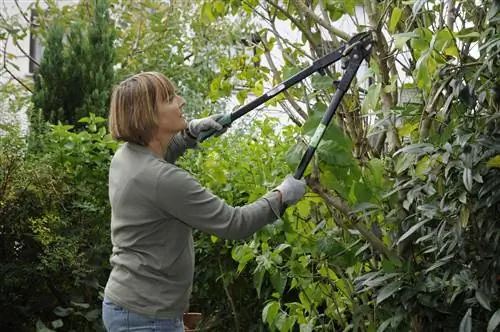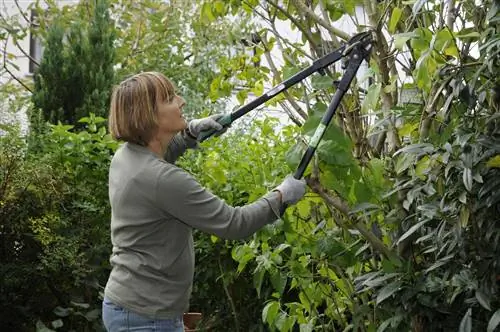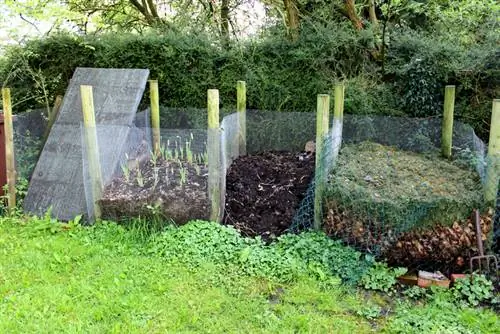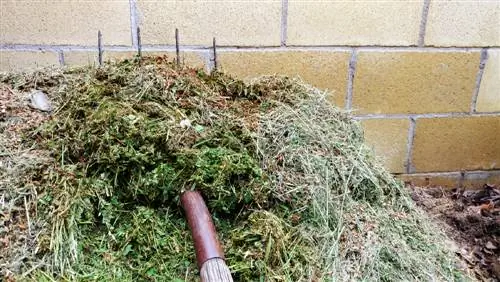- Author admin [email protected].
- Public 2023-12-16 16:46.
- Last modified 2025-01-23 11:22.
Garden waste and clippings are turned into high-quality plant fertilizer in your own compost. In this guide we will show you whether you can compost lilacs and how to prepare the plant material for composting.

Can I compost lilacs?
Since the twigs and green waste of the lilac arevaluable compost material, they can be composted after they have been professionally shredded. Parts of plants affected by diseases or pests do not belong in the compost.
How should I compost lilac leaves?
The leaves should beshreddedandin a not too thick layer put on the compost:
- The leaves can be “collected” with the lawnmower to save time.
- Mix these with organic waste from the kitchen, grass clippings and some horn meal.
- This means that the plant material rots more quickly and the fertilizer has a balanced nitrogen content.
How are lilac branches composted?
So thatbranchesquickly become valuable compost soil, they must bewell shredded:
- Cut branches into manageable pieces with secateurs.
- If there is a lot of clippings, we recommend using a garden shredder.
- Sprinkle the material into the pile in a thin layer - alternating with grass clippings and other green waste.
- A little quick composter sprinkled on top accelerates rotting.
Tip
The shredded material as the basis for a new compost
Make fresh compost and keep a few lilac branches. As a roughly chopped base, these form the basis of the new rental. Layer the branches about twenty centimeters high on the bottom of the compost lined with rabbit wire. This allows water to drain freely and prevents mold formation, which slows down composting.






